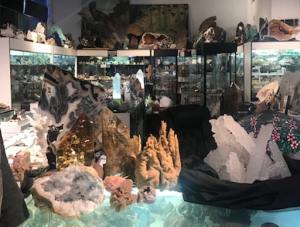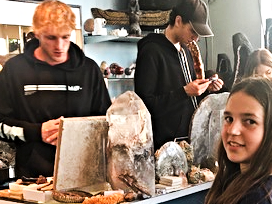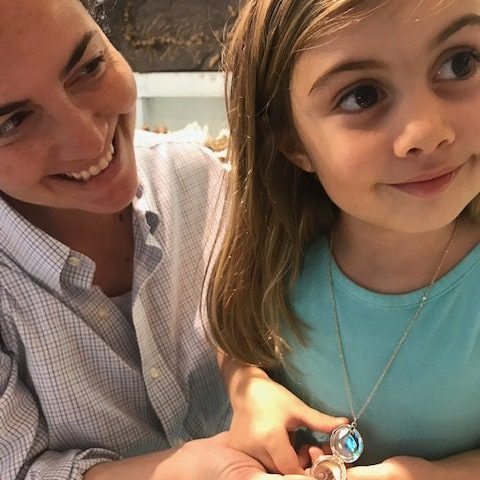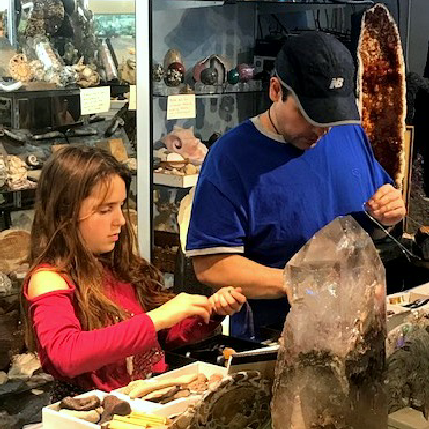The amazing wonders seen in this video are just a taste of things to come when you visit. Though, please... do not taste Henry.
Paleontologists Reveal 'Tthe Most Dangerous Place in the History of Planet Earth' | 100 million years ago the Sahara was home to a vast river system, filled with many different species of aquatic and terrestrial animals. Fossils from the Kem Kem Group include three of the largest predatory dinosaurs ever known, including the sabre-toothed Carcharodontosaurus (over 8m in length with enormous jaws and long, serrated teeth up to eight inches long) and Deltadromeus (around 8m in length, a member of the raptor family with long, unusually slender hind limbs for its size), as well as several predatory flying reptiles (pterosaurs) and crocodile-like hunters. Dr Ibrahim said: "This was arguably the most dangerous place in the history of planet Earth, a place where a human time-traveller would not last very long." https://www.eurekalert.org/pub_releases/2020-04/uop-pr042420.php
EUREKALERT.ORG
Paleontologists reveal 'the most dangerous place in the history of planet Earth'
Create Beautiful Abstract Photos with Polarized Crystals | Tiny crystals on a glass slide may look unimpressive to the naked eye, but with a macro lens and some polarizing filters they become magical. We show you how to make your own. https://www.youtube.com/watch?v=V7mqCXL6QFM&t=13s
YOUTUBE.COM
DIY Photo Project: Create beautiful abstract photos with polarized crystals
Tomanowos, The Rock With The Most Fascinating Story | An ancient name: Tomanowos, means “the visitor from heaven” in the extinct language of Oregon’s Clackamas Indian tribe. The Clackamas revered the Tomanowos – also known as the Willamette meteorite – believing it came to unite heaven, earth and water for their people. Rare extraterrestrial rocks like Tomanowos have a kind of fatal attraction for us humans. When European Americans found the pockmarked, 15-ton rock near the Willamette River more than a century ago, Tomanowos went through a violent uprooting, a series of lawsuits and a period under armed guard. It’s one of the strangest rock stories I’ve come across in my years as a geoscientist. https://theconversation.com/tomanowos-the-meteorite-that-survived-mega-floods-and-human-folly-134213
THECONVERSATION.COM
Tomanowos, the meteorite that survived mega-floods and human folly
Crystal-Covered Beetle Discovery Sheds Light | From the dramatic black and yellow stripes of wasps and striking spots of ladybirds to the dazzling metallic sheen of jewel beetles, insects show a kaleidoscopic array of hues, patterns and optical effects. But exactly why insects are so colourful isn’t always clear. How and when did insects evolve colours? We recently discovered some spectacularly preserved blue-green colours in the scales of 13,000-year-old fossilised weevil beetles. Our find sheds light on the evolution of the most complex colour-producing structures known in insects: 3D biophotonic crystals. https://www.rawstory.com/2020/04/how-did-insects-get-their-colours-crystal-covered-beetle-discovery-sheds-light/
RAWSTORY.COM
How did insects get their colours? Crystal-covered beetle discovery sheds light
Possible Dinosaur DNA Has Been Found | The tiny fossil is unassuming, as dinosaur remains go. It is not as big as an Apatosaurus femur or as impressive as a Tyrannosaurus jaw. The object is a just a scant shard of cartilage from the skull of a baby hadrosaur called Hypacrosaurus that perished more than 70 million years ago. But it may contain something never before seen from the depths of the Mesozoic era: degraded remnants of dinosaur DNA. Recovering genetic material of such antiquity would be a major development. Working on more recently extinct creatures—such as mammoths and giant ground sloths—paleontologists have been able to revise family trees, explore the interrelatedness of species and even gain some insights into biological features... https://www.scientificamerican.com/article/possible-dinosaur-dna-has-been-found/
SCIENTIFICAMERICAN.COM
Possible Dinosaur DNA Has Been Found











